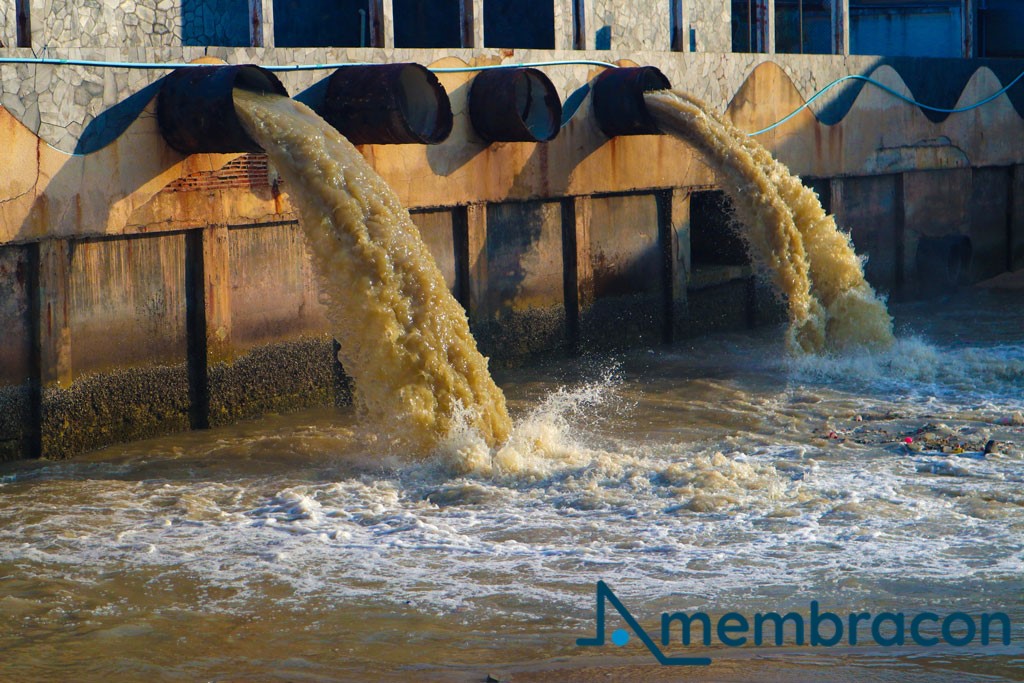Efficient Waste Water Treatment Solutions: Trick Techniques and Advantages
Efficient Waste Water Treatment Solutions: Trick Techniques and Advantages
Blog Article
Strategic Approaches to Boost Drainage Treatment Efficiency and Reduce Environmental Influence
In the world of waste water therapy, the pursuit for improved performance and minimized ecological effect is a continuous challenge that demands strategic remedies. The integration of sophisticated therapy innovations, energy-efficient procedures, source recovery techniques, boosted nutrient elimination techniques, and wise surveillance and control systems stands for a diverse framework for addressing these pushing worries.
Advanced Therapy Technologies
Advanced membrane layer purification systems have transformed innovative wastewater treatment procedures, considerably boosting the elimination of contaminants. These cutting-edge systems operate by requiring water via a semi-permeable membrane, effectively separating contaminations from the water stream. The membrane's microscopic pores trap toxins such as bacteria, infections, and put on hold solids, allowing only detoxified water to go through. This modern technology has confirmed to be extremely efficient in eliminating a vast variety of impurities, including drugs, hefty metals, and organic substances, which are commonly challenging to remove through typical treatment techniques.
In addition, membrane layer filtration systems provide countless benefits over conventional therapy techniques. In addition, these systems are highly flexible and can be conveniently incorporated into existing therapy plants or utilized as standalone systems for decentralized applications.
Energy-Efficient Procedures
The assimilation of energy-efficient procedures in wastewater therapy systems is important for optimizing source usage and minimizing operational expenses. One vital approach to boosting power efficiency in wastewater treatment is the use of sophisticated oygenation systems, such as great bubble diffusers or surface area aerators, which can improve oxygen transfer performance and minimize energy intake.
Furthermore, optimizing process control and automation with making use of innovative sensors and keeping track of systems can improve total energy effectiveness by changing procedures in real-time based upon actual demand and conditions. Applying power audits and consistently keeping track of energy performance indications are important techniques to identify locations for renovation and track energy-saving campaigns successfully. On the whole, the fostering of energy-efficient processes in wastewater treatment not just profits the setting yet additionally adds to lasting cost savings and functional sustainability.
Source Recuperation Approaches
With a concentrate on maximizing resource application and sustainability in wastewater treatment systems, the implementation of resource healing methods arises as an essential element in improving functional efficiency. Resource recovery strategies in wastewater treatment include the recognition and removal of useful resources from the waste stream, thereby turning what was once thought about waste into an important possession. By carrying out source recovery strategies such as nutrient removal and recovery, power generation from raw material, and the manufacturing of multiple-use water, wastewater therapy plants can lessen environmental effect while making best use of performance.

Enhanced Nutrient Elimination Techniques
Carrying out sophisticated nutrient elimination methods is necessary for maximizing the performance of wastewater therapy systems. Enhanced nutrient removal plays an essential role in decreasing the ecological effect of cured effluent released into water bodies. Among the vital methods used for improved nutrient removal is the process of organic nutrient elimination (BNR), which involves the elimination of nitrogen and phosphorus with biological processes. This can be attained with the use of specialized microbes that can convert nitrogen compounds right into inert nitrogen gas through denitrification, and accumulate phosphorus within their cells via a procedure called improved biological phosphorus removal (EBPR)

In enhancement to BNR, advanced therapy techniques such as membrane layer bioreactors (MBRs) and constructed wetlands can additionally be utilized to enhance nutrient elimination effectiveness. MBRs use membranes to accomplish top quality effluent criteria by successfully eliminating nutrients and suspended solids. Created wetlands simulate natural marsh processes to get rid of nutrients with plant uptake, microbial task, and sedimentation. By including these sophisticated nutrient elimination methods into wastewater treatment sectors, systems and districts can effectively lower nutrient air pollution and safeguard the environment.
Smart Surveillance and Control Equipment
Using sophisticated modern technology, the integration of clever monitoring and control systems transforms the operational efficiency of wastewater therapy facilities. These systems incorporate advanced sensors and data analytics to continuously keep track of crucial specifications such as pH degrees, turbidity, dissolved oxygen, and flow prices in real-time. By gathering and assessing this data, drivers can gain useful understandings into the efficiency of the treatment processes, enabling aggressive modifications to maximize treatment efficiency.
Smart tracking and control systems also support remote monitoring abilities, enabling operators to accessibility real-time information and control features from off-site places. This remote availability improves functional adaptability and read more responsiveness, allowing quick interventions in situation of system breakdowns or fluctuations in influent top quality. The predictive maintenance capacities of these systems assist protect against tools failings and decrease downtime, ultimately enhancing the total integrity of wastewater therapy operations.
Verdict
In verdict, critical techniques such as innovative treatment technologies, energy-efficient processes, source healing techniques, improved nutrient removal strategies, and wise tracking and control systems play a vital function in enhancing wastewater therapy efficiency and reducing environmental effect. By executing these techniques, wastewater therapy plants can enhance their general performance, minimize power usage, recuperate beneficial sources, and make certain conformity with ecological regulations. These methods are necessary for lasting and reliable wastewater administration techniques.

In verdict, tactical strategies such as advanced treatment technologies, energy-efficient procedures, resource healing techniques, enhanced nutrient elimination strategies, and smart monitoring and control systems play an important duty in improving wastewater therapy efficiency and reducing ecological effect.
Report this page